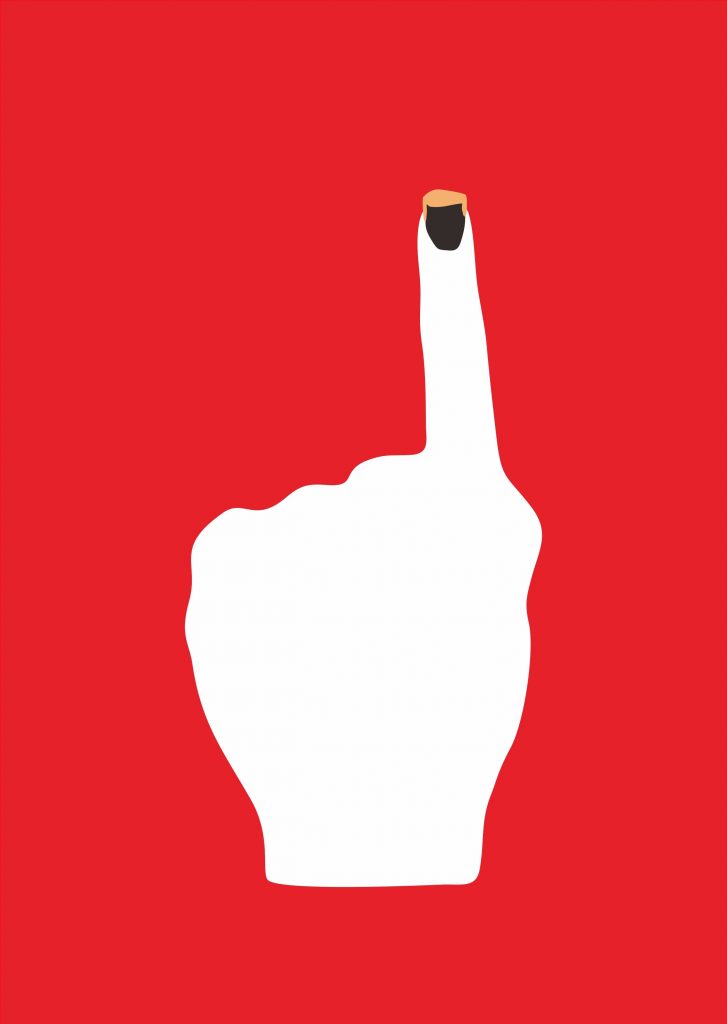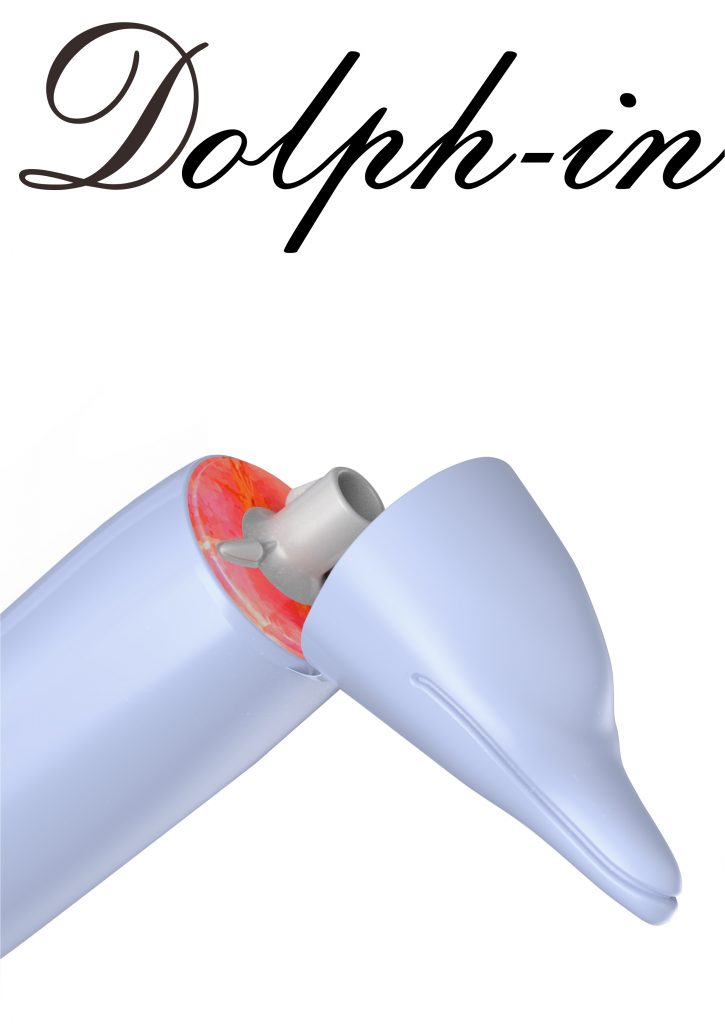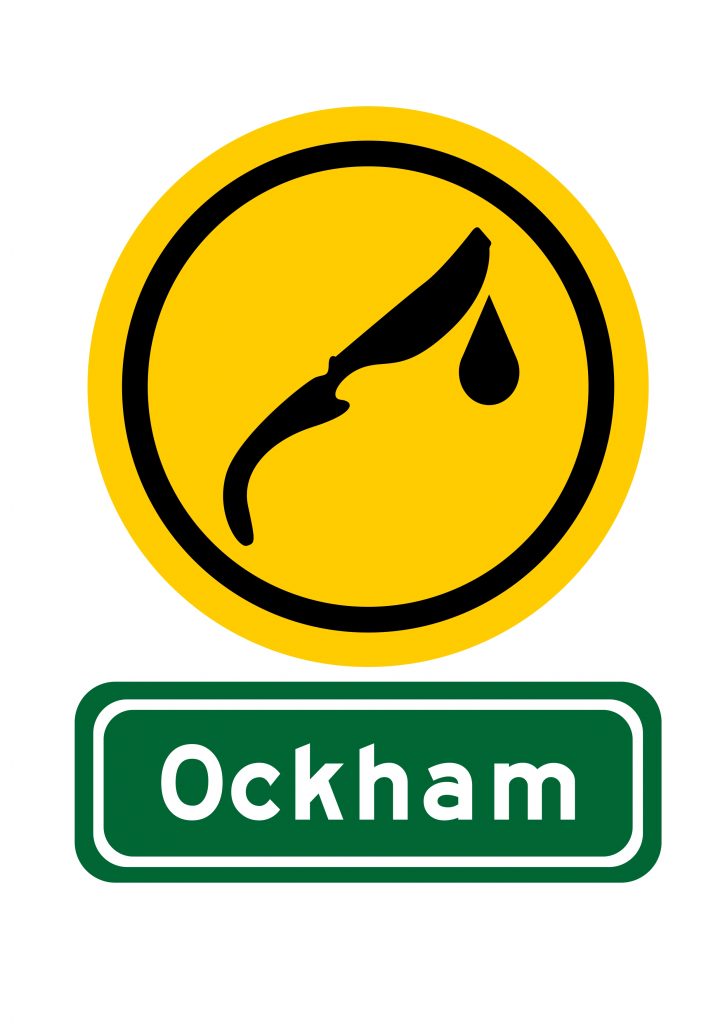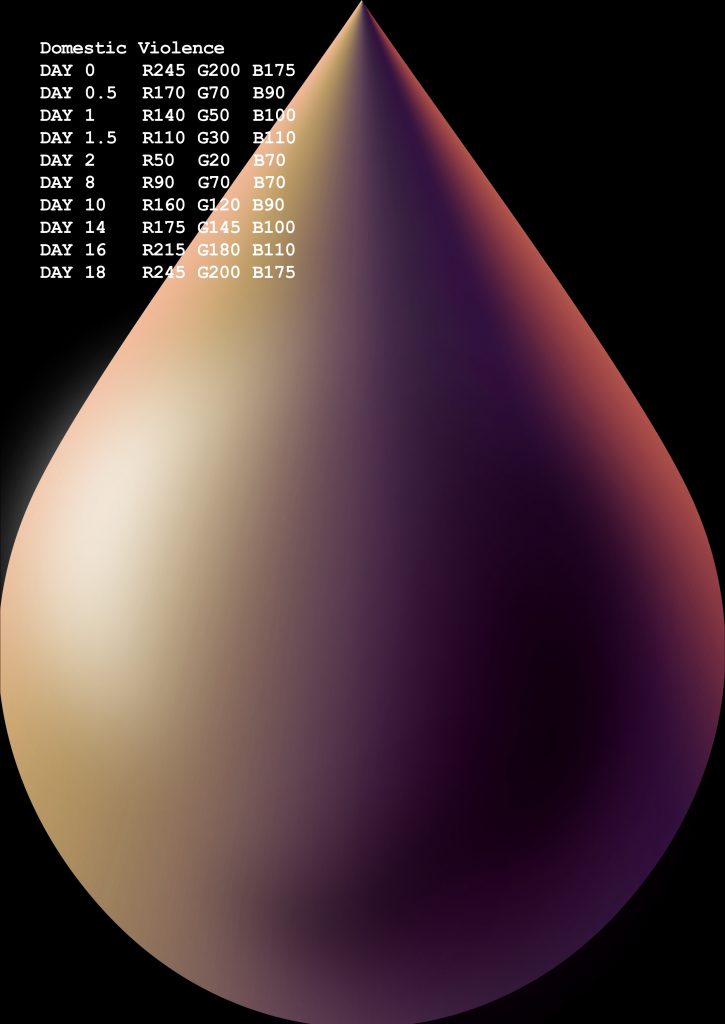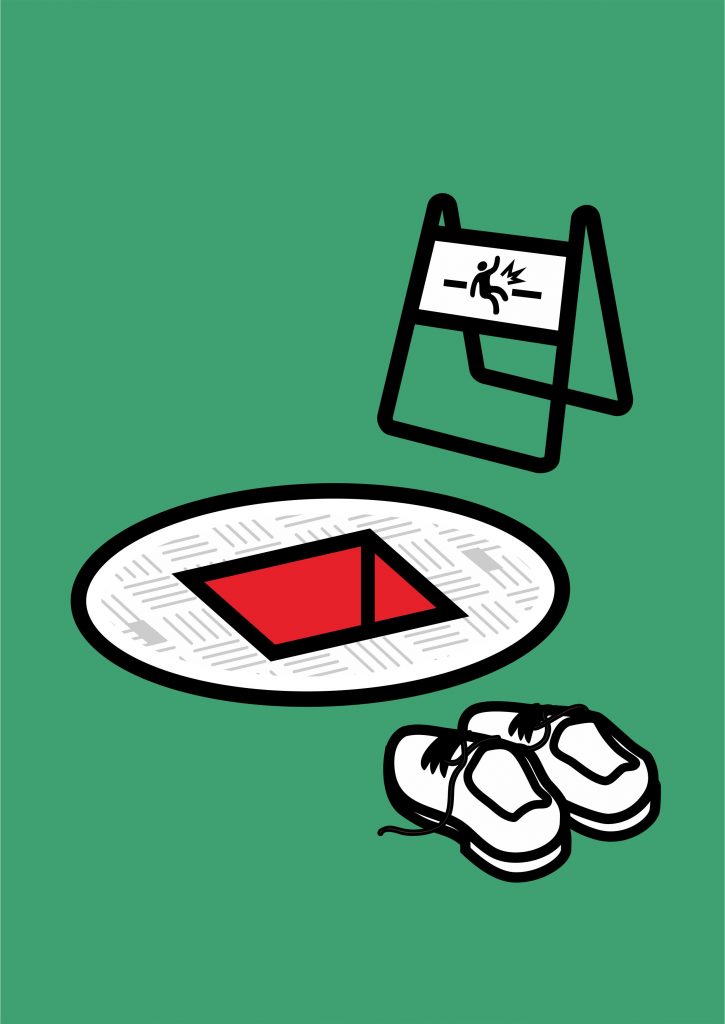
Rui’s Projects on Curriculum Vitae for Application
Thank you for your interest, I am honored to be able to present more details about the projects I have presented in my CV and PS for Anthropology.
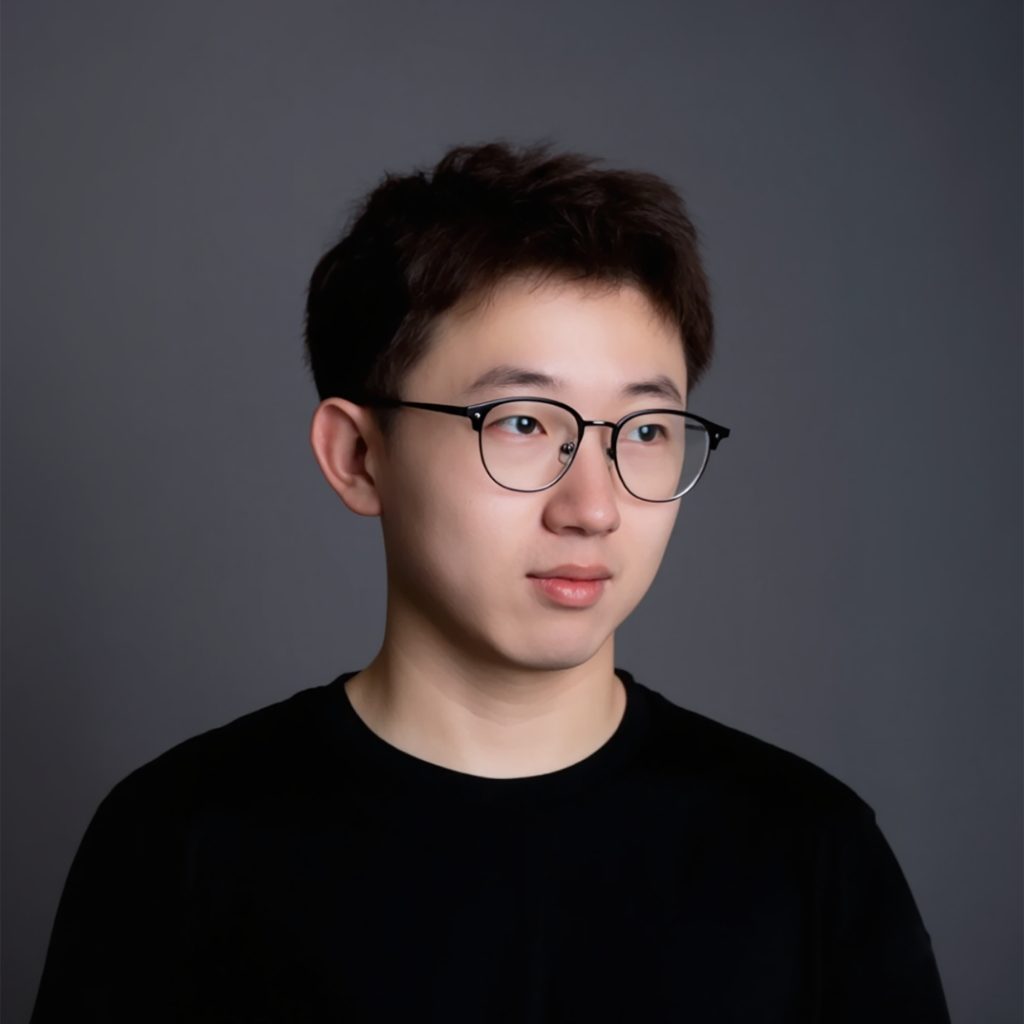
Rui Wang
2024 — 2025
China State Construction Engineering & Research Institute
Research intern
2021 — 2024
Tsinghua University
Graduate student
2016 — 2020
Wuhan University of Technology
Undergraduate student
RESEARCH
① Family Folding:
Paper Exhibition on
the Culture of Household Containers
MFA research in Visual Narrative and Social Design, supervised by Prof. Degeng Li
Explored individual narratives within the family sphere, focusing on daily storage habits through the lens of auto-ethnography; how physical and memory spaces are reconstructed through body-thing interaction; and how to present my family spatial memories through exhibition-on-paper design.
Conducted case studies based on four containers, collecting over 200 items under four narrative themes; completed a 27,000-word dissertation; designed all aspects of four exhibition-on-paper booklets, including structure, layout, printing and display.
Exhibition shown at the Art Center Hall of the Academy of Art and Design, Tsinghua University for two weeks in May 2024.
Time: May. 2024
Cost: 2,100£
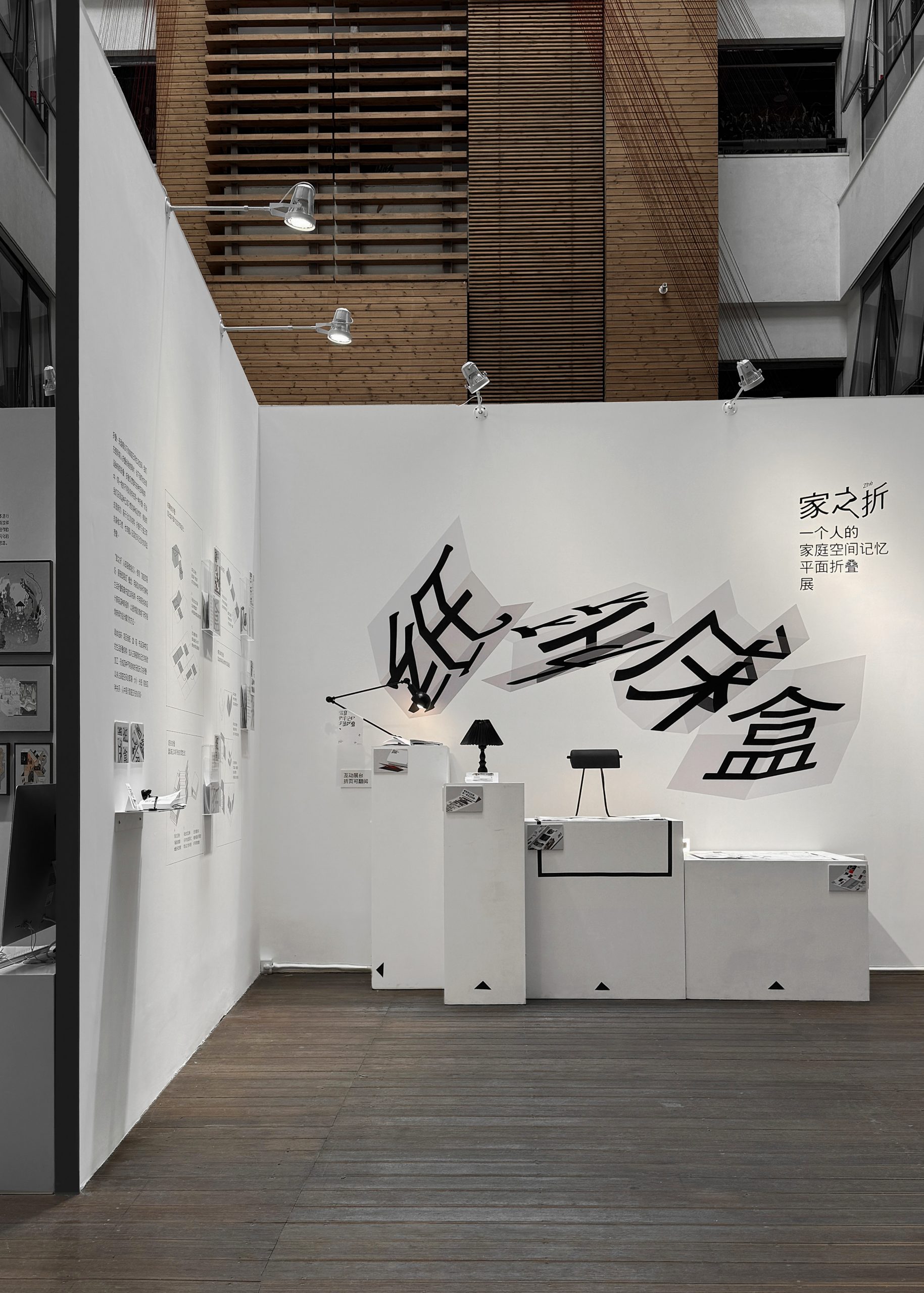

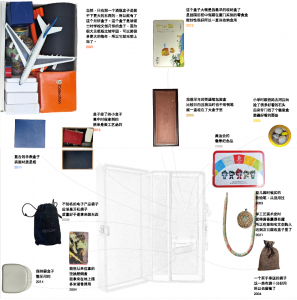
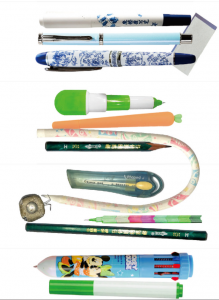
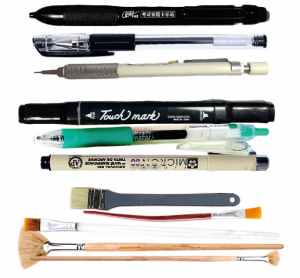


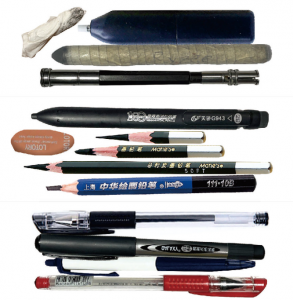
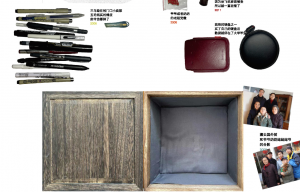
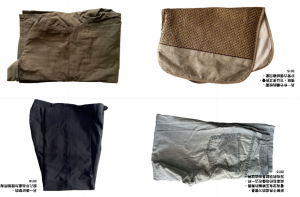
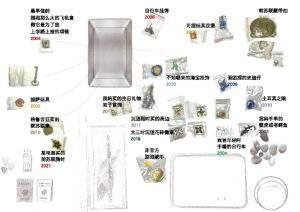
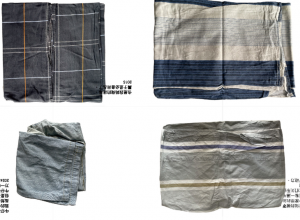
GUIDEBOOK 1
Recording events, collecting items, making albums or containers thicker. The moment we look at the sides of these items, is the beginning of our recollection. From thick to thin on a spatial dimension, our memories are reordered in the bookshelves.
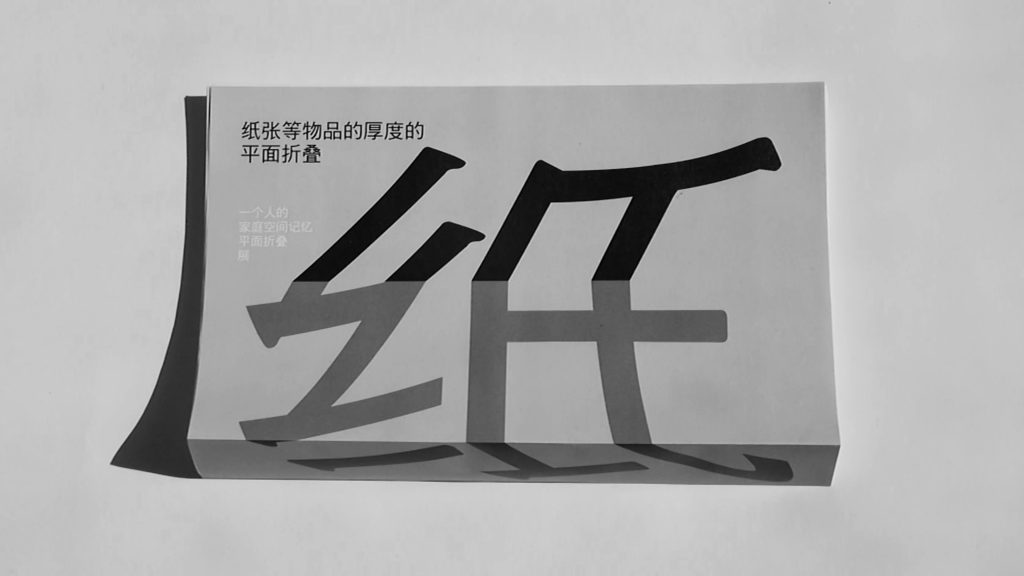

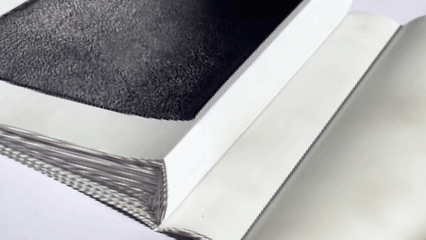
GUIDEBOOK 2
As we grow up, we repeatedly open the pencil cases or pen pouches, and, these containers contain different stationeries at different ages. When we juxtapose these containers, what is formed is a path of past stationeries.

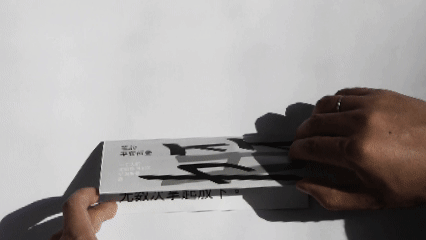
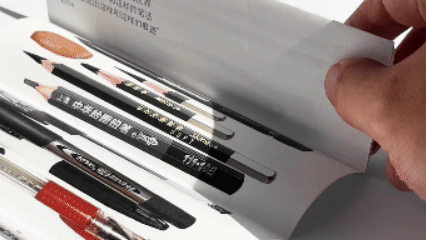
② Lifeworld Link:
Beijing Jieshan Urban
Regeneration Exhibition
Worked as a curator, responsible for content research and graphic design for this Survey Programme of the Ministry of Housing and Urban-Rural Development, P. R. C. (Changsheng Model of Changping District).
Explored four Chinese pronunciation (‘four Jie’, written as 介街界接) to link four historical periods of Jieshan’s development from the 1880s to 2010, investigating the intersections of individual and collective memory among residents in relation to their physical environment.
Completed a week of fieldwork, conducting semi-structured interviews with 15 residents born in 1960s on their memories of the area and collecting historical objects; produced a 5,600-word content report and 4,500-word narration. Designed 65 interpretation panels and four installations, awarded by the Chinese Spatial Design Competition Bronze Award.
Time: Oct. 2023
Cost: 9,700£
Space Design: He X.L., Zheng J.

Research phase: the main objective was to find sub-themes to define the exhibition chapters in four separate spaces. The research is divided into two parts: field research and memory collection.
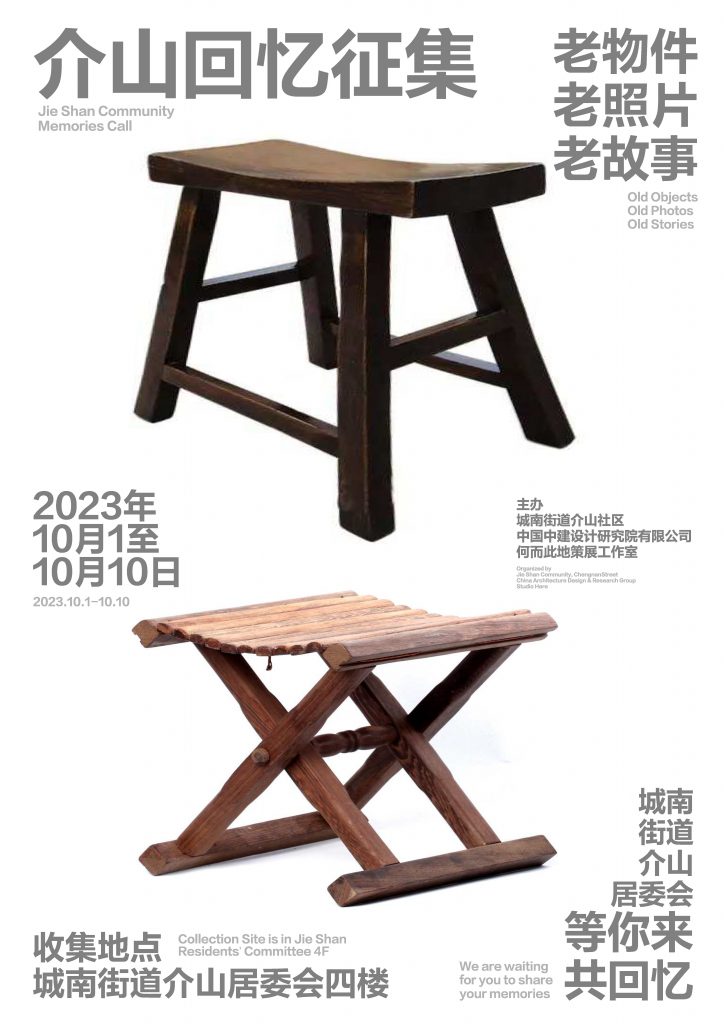

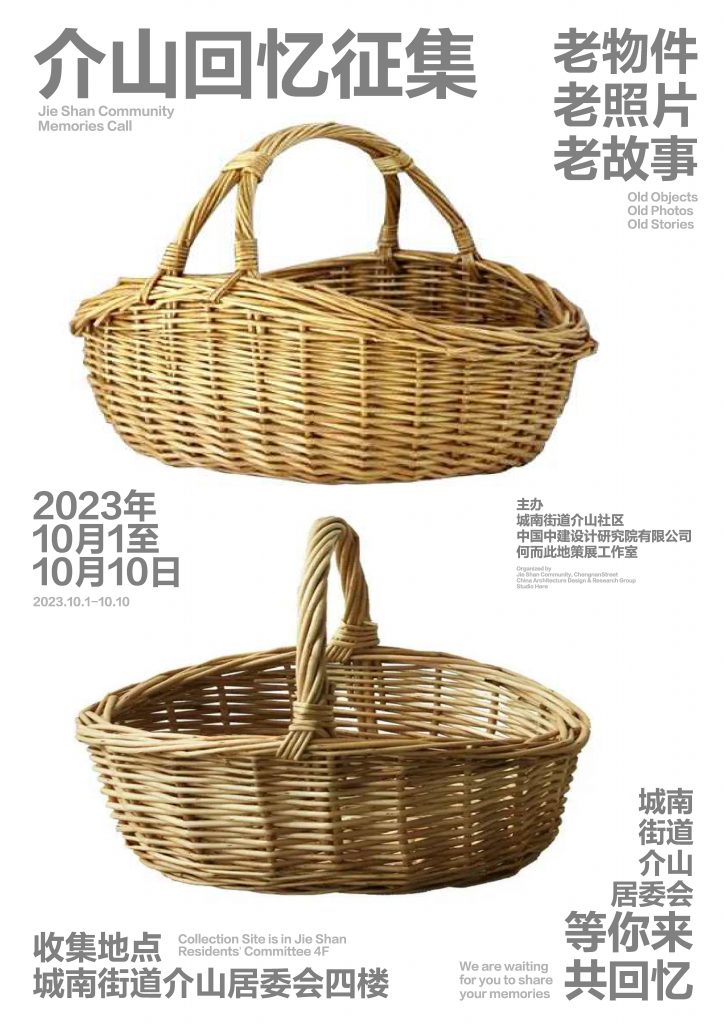
Organizing phase: identify the tone of the exhibition content, confirm the spatial quota of the content panels under each sub-theme, and establish the conceptual relationship of each section.

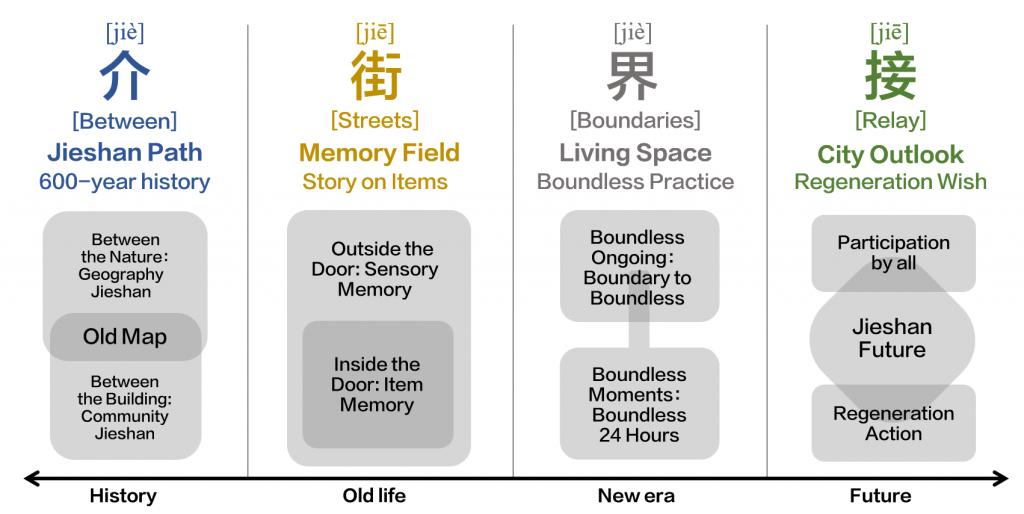
Chapter II “Memory Field”
One part is a collection of sensory memories from Jieshan, such as tree shadows (video), cooking and frying (sound), piano practicing (sounds), old village road (video), yellow wall (touch), tree bark (touch), old clock (sound).
The other part is a storytelling of old objects, selected from the residents’ representative objects.



③ Residents Co-create:
Memory Maintenance
System in the Urban Village
- Led an eight-person team and was responsible for visual design and branding strategy on a project exploring ways of bridging the gap between residents and tourists in the early stages of the renovation of an urban village (Nantou City), addressing the ‘memory hollow’ issues of ‘who can define Nantou’s memory’ and ‘tourist gaze of camera’.
Designed the Resident-Social worker-Designer (RSD) system, using a bracelet inductor interaction instead of a mobile phone camera to transform residents’ memories into check-in points on the street.
Helped produce a PPT presentation given at the Shenzhen Nanshan Social Work Association and Tsinghua Open- FIESTA Center. Awarded SDG Tsinghua Excellent Display Award, Hong Kong Youth Design Award 2nd Prize.
Team Members: Wang R., Li C., Zhuang H., Zhang C., Lin S., Hu Z.
Project Support: Nantou Community Committe, Tsinghua Open Faculty for Innovation, Education, Science, Technology and Art (Open FIESTA)
Video ↓
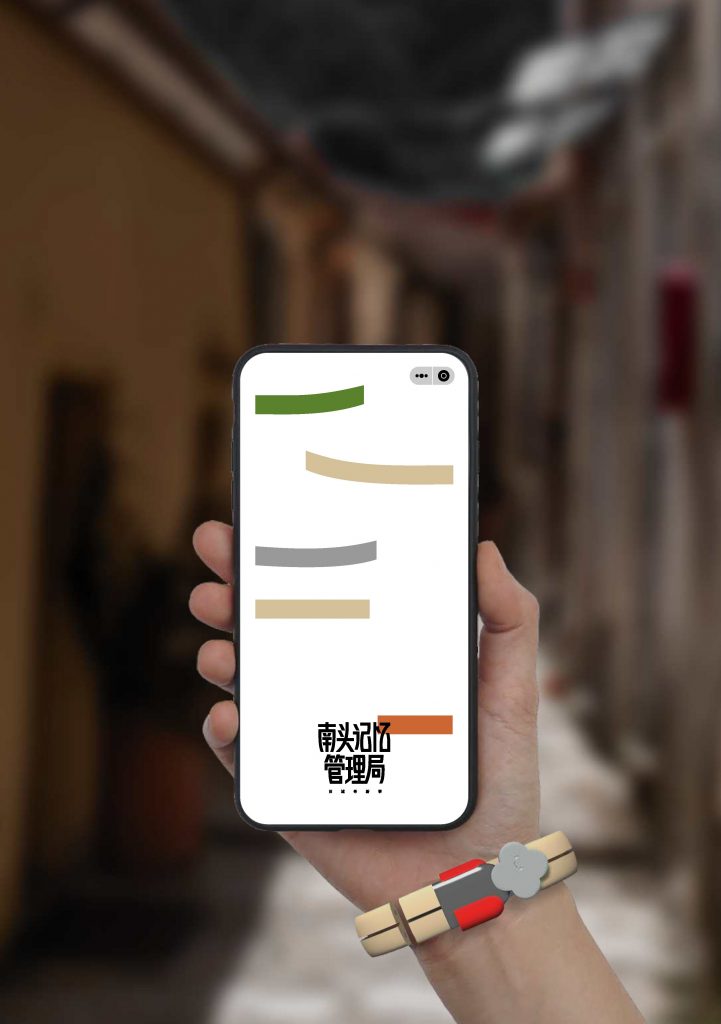
④ D-Violence Exhibition:
Interactive Visual Design
Exploration Against Domestic Violence
Bachelor Graduation Project supervisor: Prof Song Xinjuan
Explored the efficiency of anti-domestic violence warning by employing design medium. Chose 8 domestic violence incidents for case studies with document analysis, comparisons.
Constructed an anti-domestic violence exhibition and brand system from spatial generatrix logic, including the pre-exhibition posters, the interactive installation and the post-exhibition materials.
Designed a thermochromic installation and interactive heater to reproduce the formation of bruises, substituted the abuser-victim relationship for the audience-installation relationship.
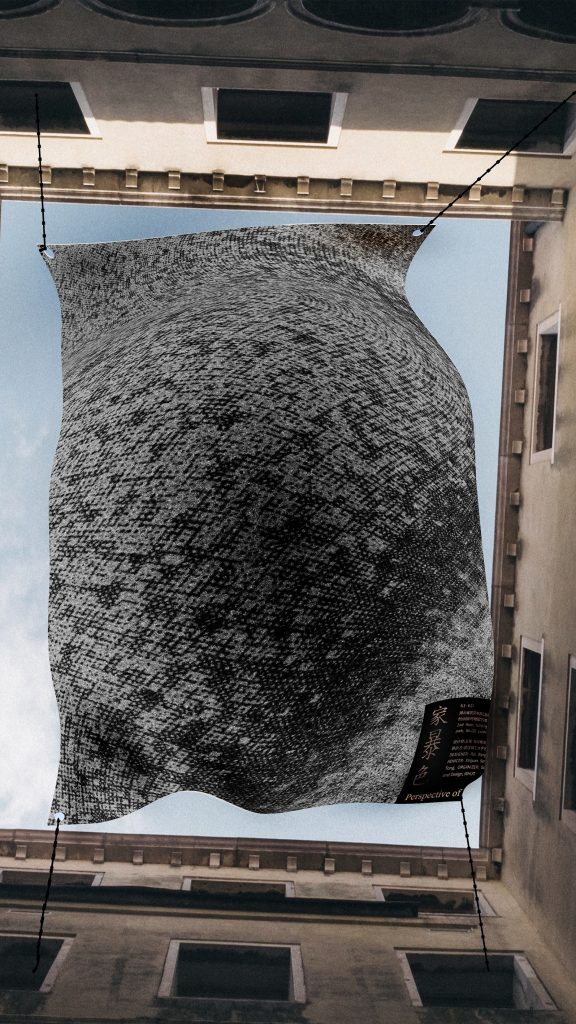

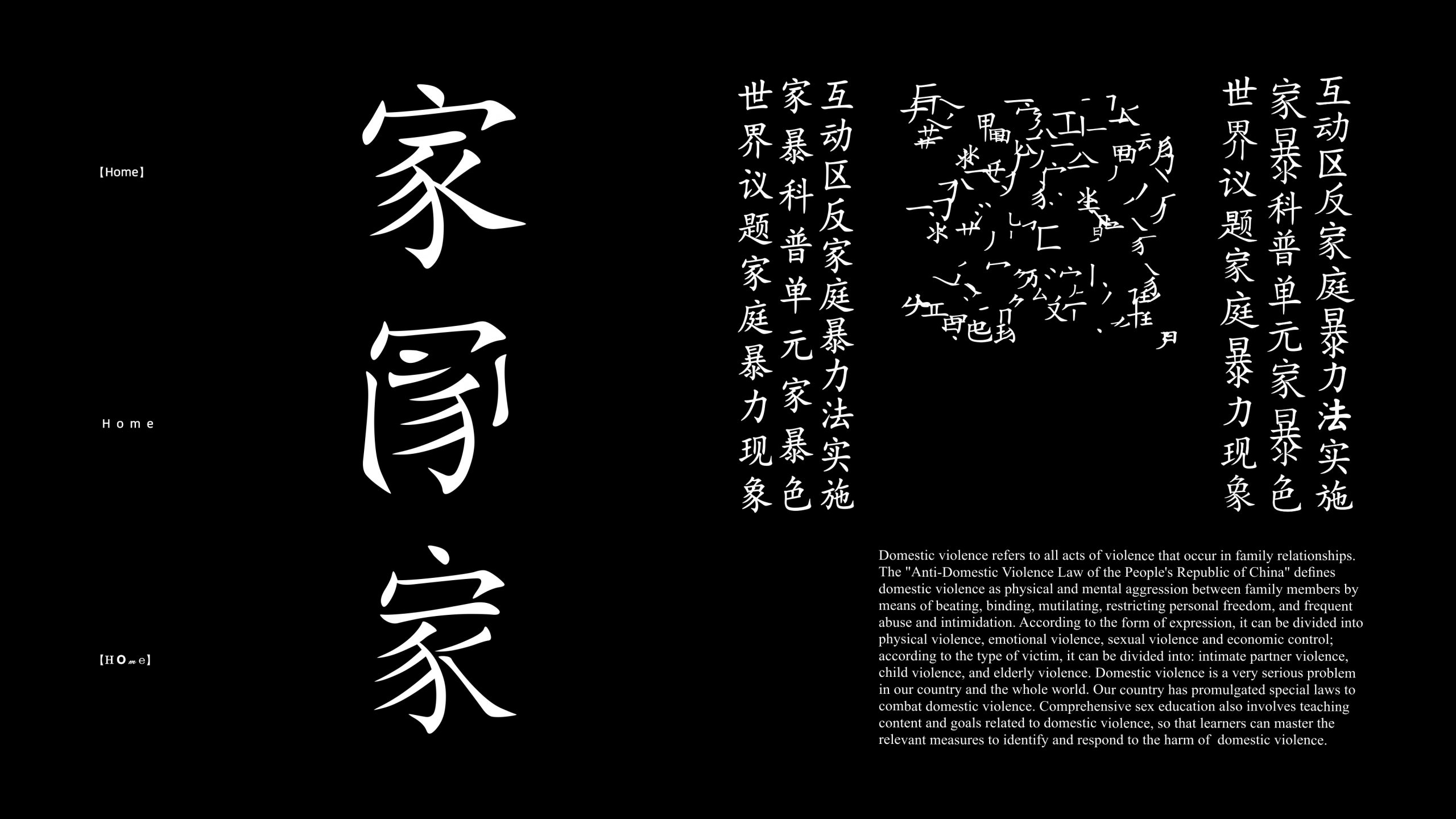

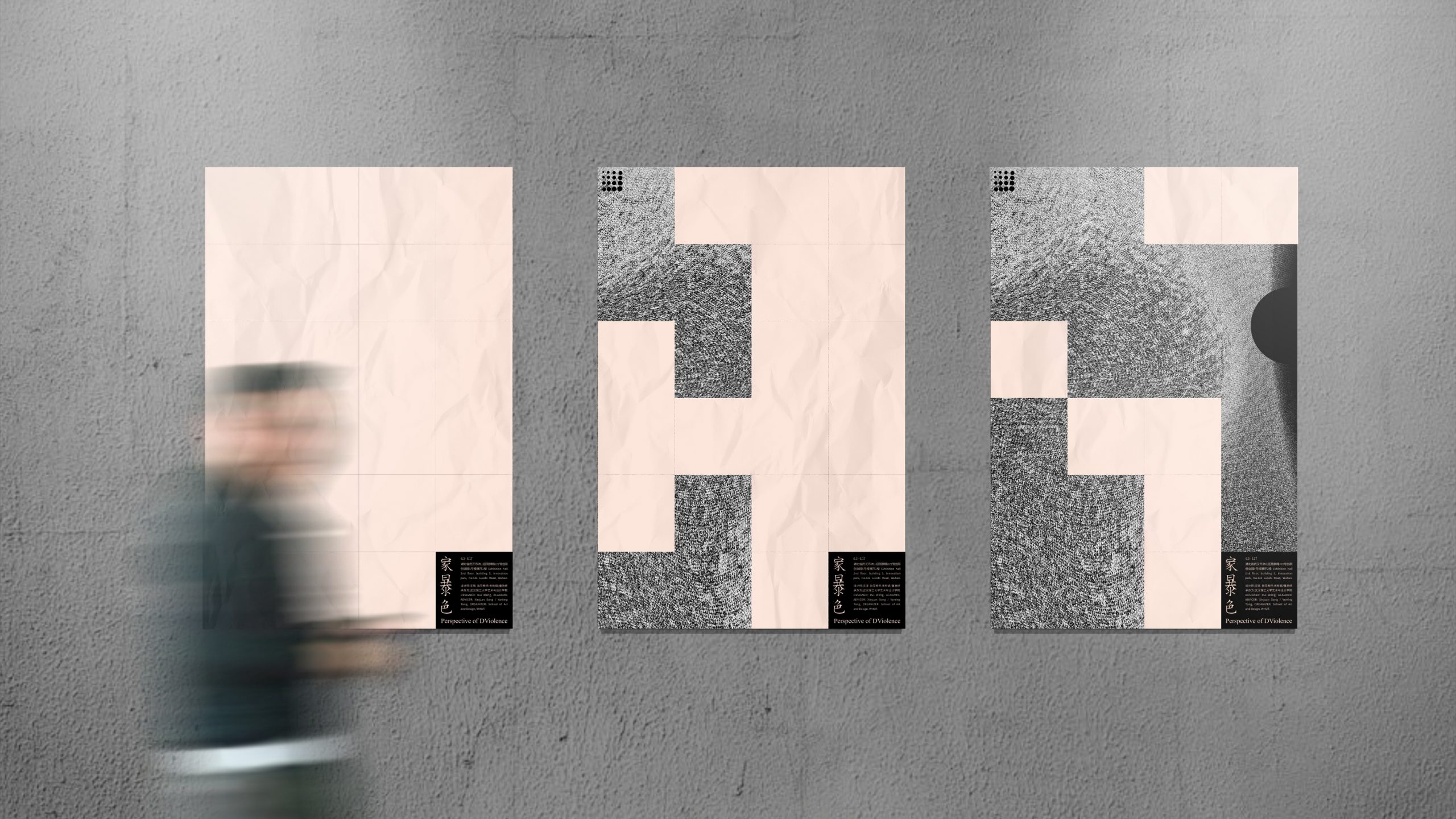
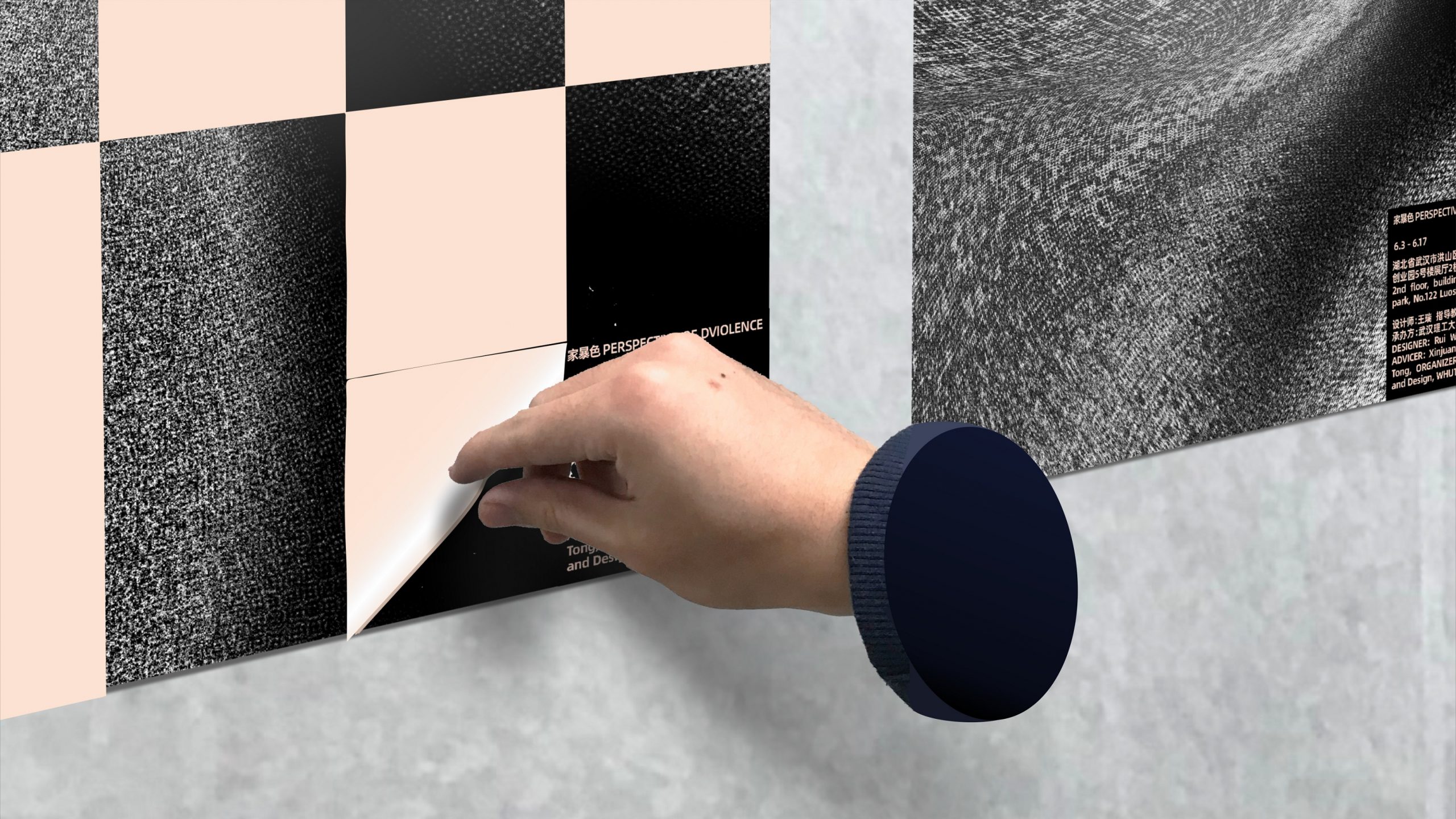
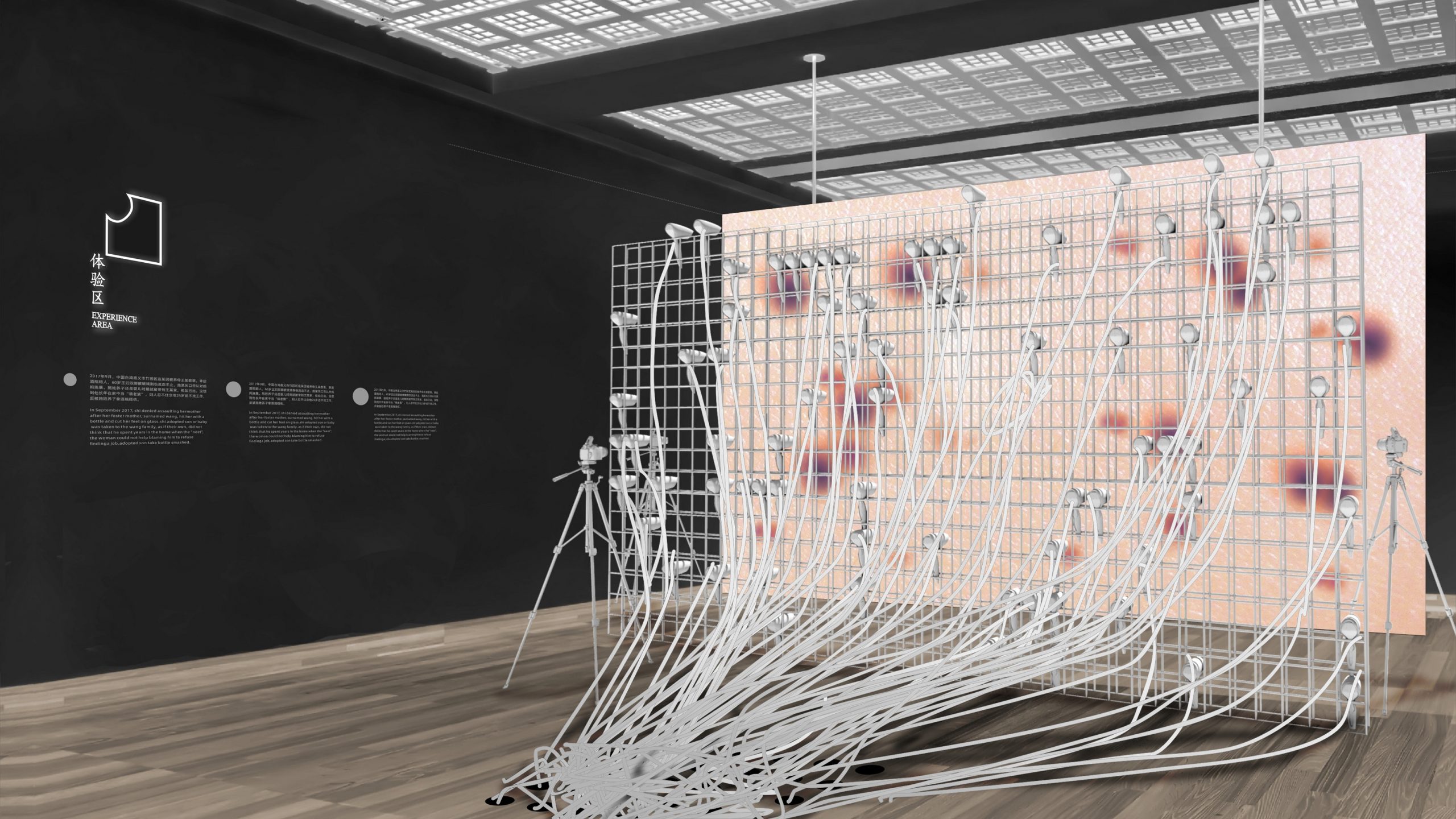
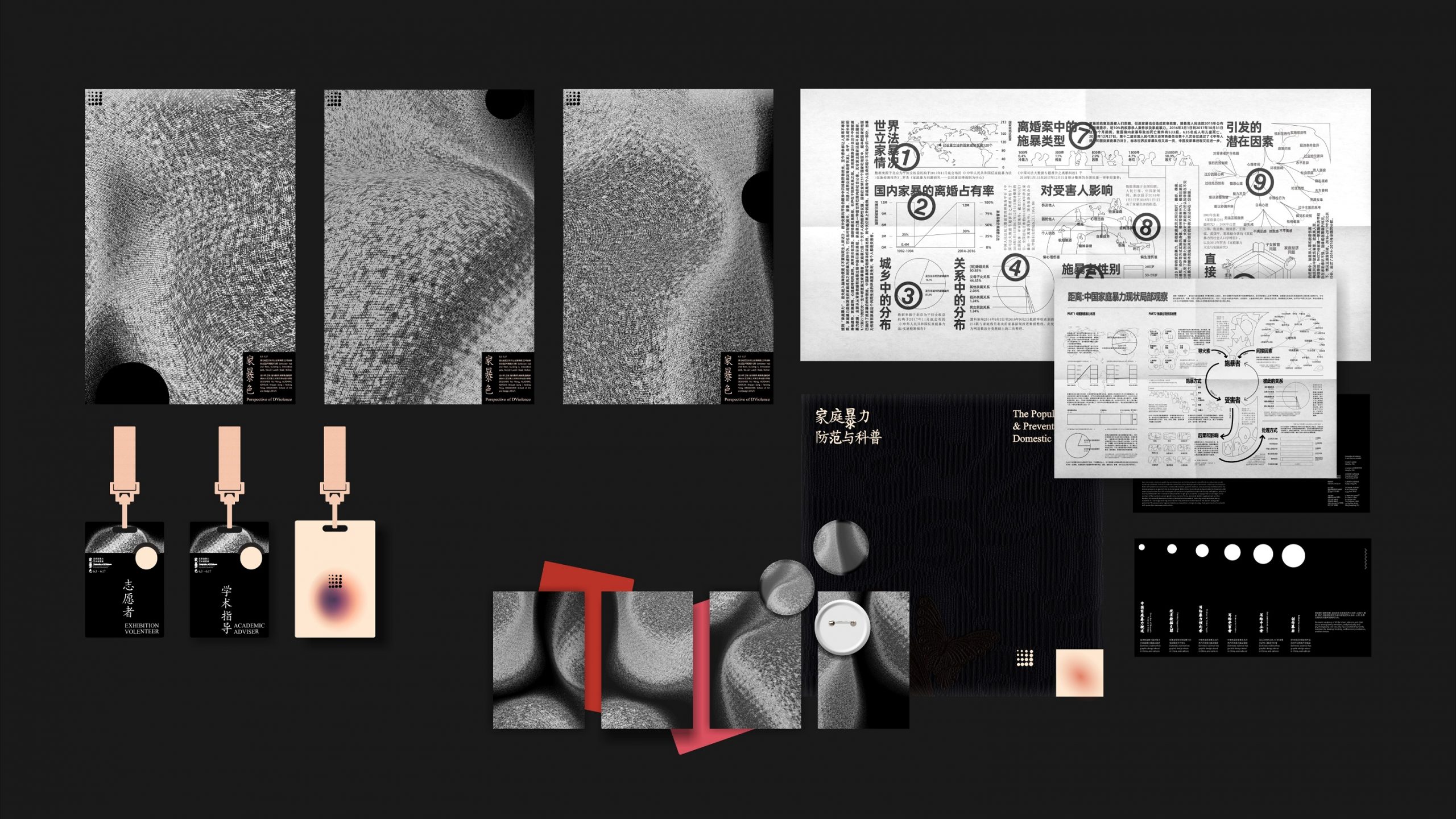
During my undergraduate studies in design, my exploration of visuality often intersected with issues beyond the aesthetic, such as the cultural considerations when creating works. My graduation project, for instance, analysed the ethical implications of symbols used in the social representation of domestic violence in China, such as posters and advertisements. Explicit symbols such as bruises are intended to evoke social memories of domestic violence, but their indiscriminate use can amount to ‘visual violence’, creating a collective ‘gaze’ that objectifies victims. While this gaze is part of a historically constructed visual memory, reproducing it through design risks further marginalising the perpetrators. My project juxtaposed the ‘perpetrator-victim’ relationship with the ‘observer-observed’ relationship in exhibition contexts. I used thermochromic installation to transfer the agency of bruise formation to the audience, encouraging reflection on the ethical responsibility in representations of violence.
I further explored the relationship between memory and culture in a master’s programme at Tsinghua University, where I designed in both urban and rural public spaces, enriched my fieldwork skills and deepened my interest in anthropology. In my first year, I worked in a partially redeveloped urban village in Shenzhen, addressing cultural conflicts among commercial consumers, indigenous villagers, and migrant workers by navigating government regulations and fostering intercultural communication. It led me to a deeper appreciation of the political dimensions of critical memory, as captured in Pierre Nora’s claim that, memory is a site of political struggle. In response to the erasure of ordinary individuals’ memories under state-driven narratives, I led a course team to design a gamified app, using designed bracelet for offline exploration, meanwhile activating character memories on app interface, to ease tensions between conflicts.
Throughout my studies in design, I read widely in sociology and anthropology. This reading influenced my curatorial projects in the community: I gradually draw on insights from phenomenological sociology and visual anthropology. In the Beijing Jieshan Urban Regeneration Exhibition, for instance, I explored how sensory and temporal experiences influence life in an ageing community. My fieldwork revealed that the life trajectories of the community members had given rise to a cultural construct based on shared memories of vision, touch, or sound. Attempting to convey this in an exhibition context, however, risked creating cultural closure. Hence, to make these sensory experiences accessible, my installation used a ‘person-object-environment’ narrative structure to help the audience situate the items displayed within the context of the surrounding life.
In my master’s graduation project, I applied my accumulated research experiences to the topic of family memory. I conducted an auto-ethnographic study of my own habits relating to collection and storage, guided by Paul Connerton’s view that social memory is transmitted through bodily practices and material culture. This led me to a visual study of domestic storage as a memory space. As well as morphing over time, the memories associated with a given object depend on where they are placed in the home. This creates an overlapping form of memory that manifests as both temporal sequence and spatial typology. I applied this to the structural redesign of guidebooks, which made me recommended for Milan Design Week. This project shaped my doctoral research on the cultural significance of storage and collection in the ‘family museum’—an extended concept that incorporates domestic objects into curation narratives. I aim to find how somatic memories grounded in spaces and objects are constructed through kinship and generational transmission.
RECENT PUBLICATIONS
The Self-consciousness of the Form:
The Dynamic Impact of Medieval Georgian Social Transformations on Script Characteristics
Essay (1st prize with top 3.16% . In press before May 2025)
ABSTRACT: “The external self-consciousness of the Georgian script in the Middle Ages is manifested in the fact that, in the face of strong culture and politics, the transmitters of the script consciously took advantage of the stable system of cultural inheritance, to form their own path of reproducing and transmitting the script. Its internal self-consciousness is that, they adjusted the scenario of the application of the newborn script, in order to adapt it to the polictial environment. On the other hand, when there were the right conditions, they continued to explore the various possibilities of script. The essence of the development of the Georgian script is a differentiated national perception in contrast to the surrounding powers, which has led to the continuous adaptation of the Georgian script to new scenarios and writing habits on the basis of the original interaction, from religious rituals to secular efficiency to personal expression, branching out in the long course of history.”
DESIGN & AWARD
United Nations
14th Chinese Language Day:
Jacob Rosenfeld Exhibition
Commissioned by Linyin and Shandong Government to work as visual design leader on an exhibition of Dr. Jacob Rosenfeld’s life and contribution to medicine in Shandong Province during World War II.
Used a timeline visualization strategy to present images alongside narrative text in a long hall; communicated with the county hospital to obtain biographical details, as well as with representatives from Vienna to create an ergonomic layout concept for the site, resulting in designs display boards measuring 10×3 meters.
Two-day exhibition held in Vienna United Nations Headquarters in May 2023.
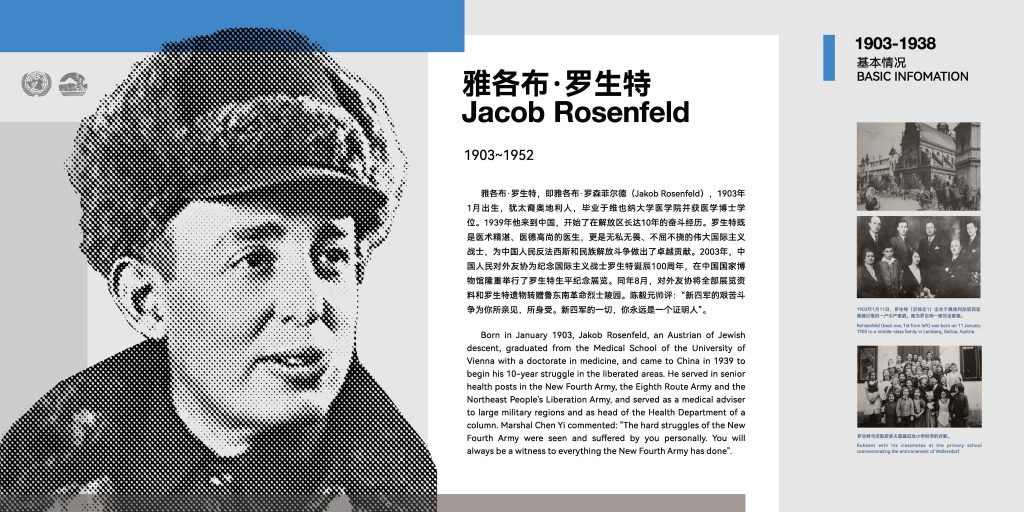
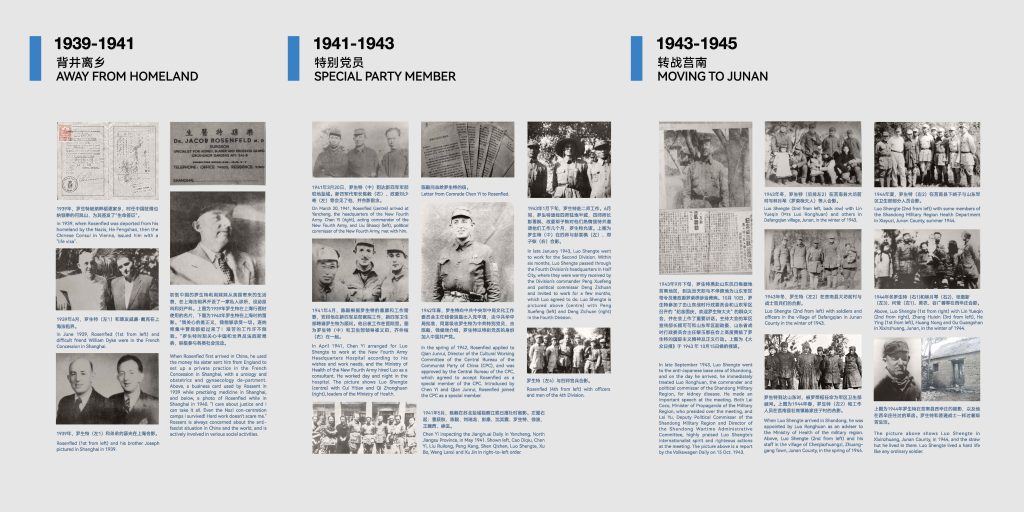
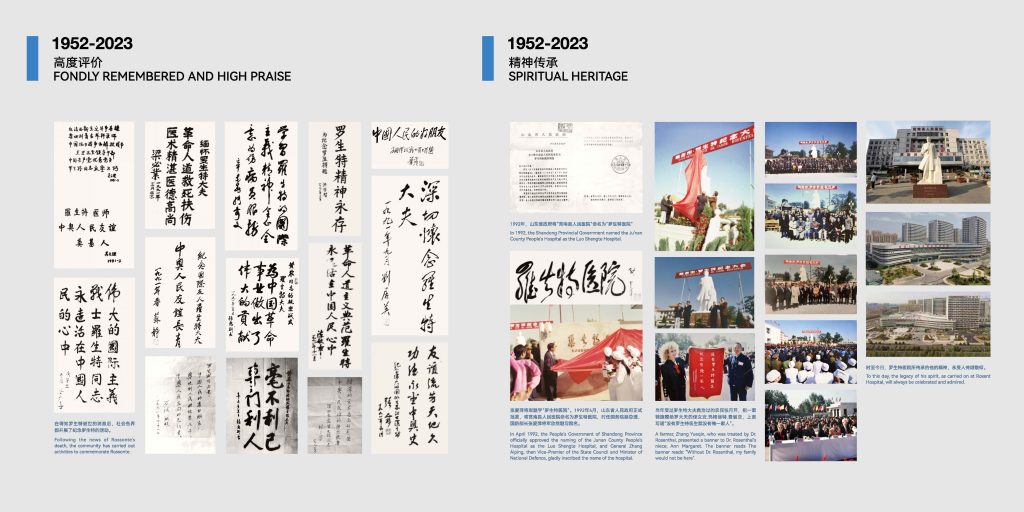
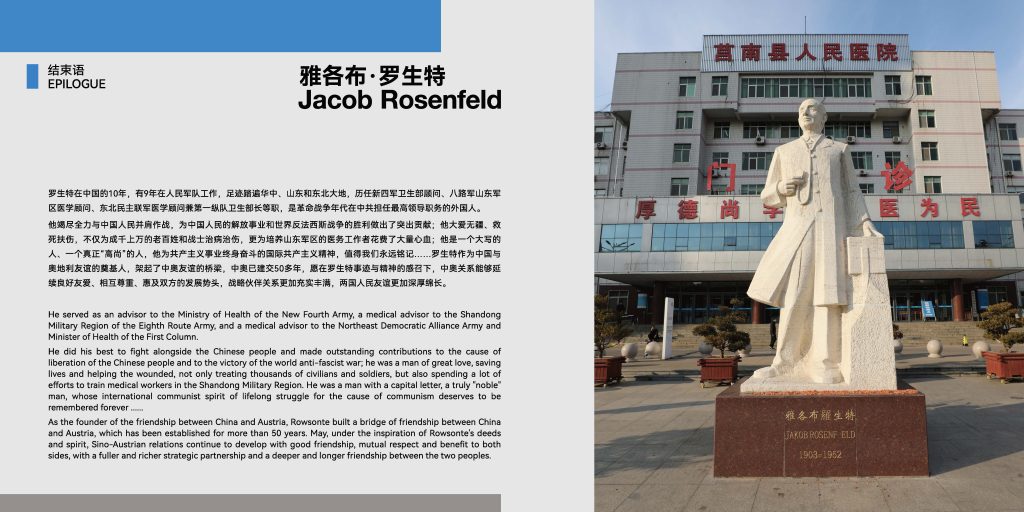
Beijing International Film Festival:
Public Welfare Forum
‘Film as Educator’ Session
Delegated by Junan Government, responsible for visual dynamic design; applied graphic elements of film reel and tickets to reflect Junan’s film education from 1949 to 2023.

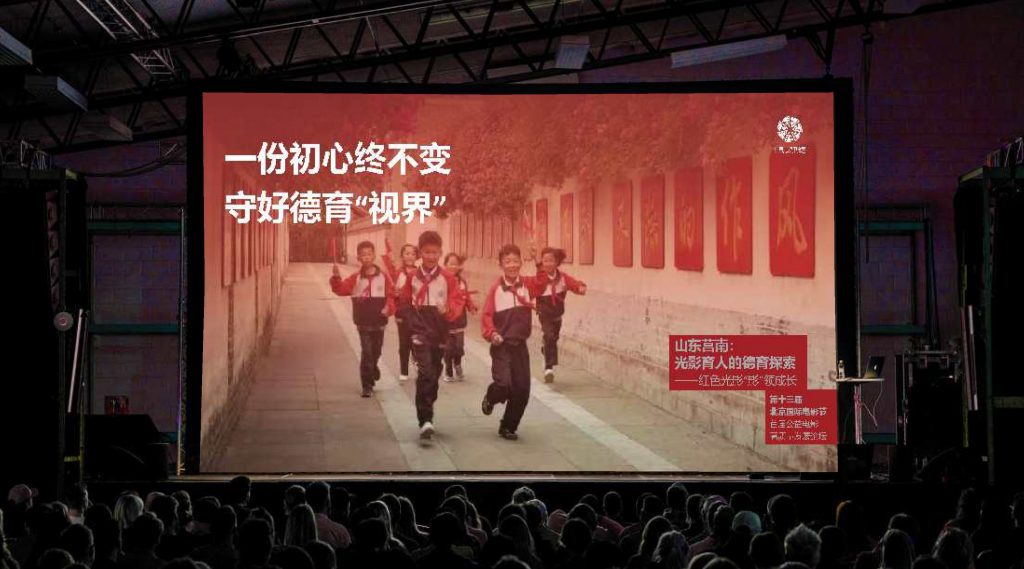

The National Art Center Tokyo:
The Japan Graphic Designers Association
Student Poster Award Exhibition
The meanings we express always have a context, the images we create always have a background: the environment shapes our expressions.
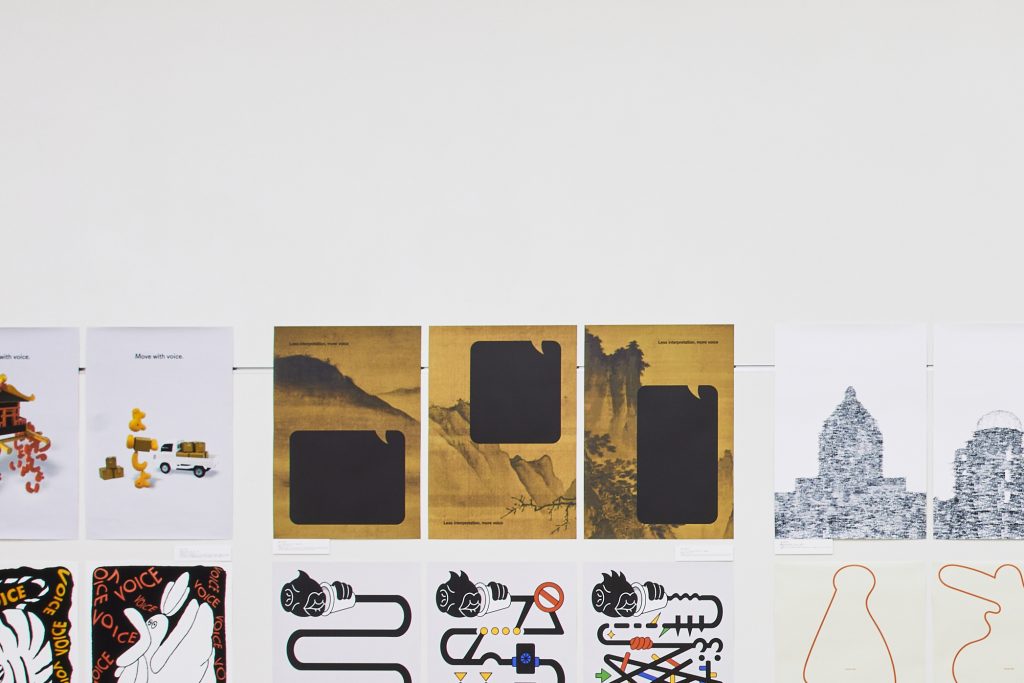
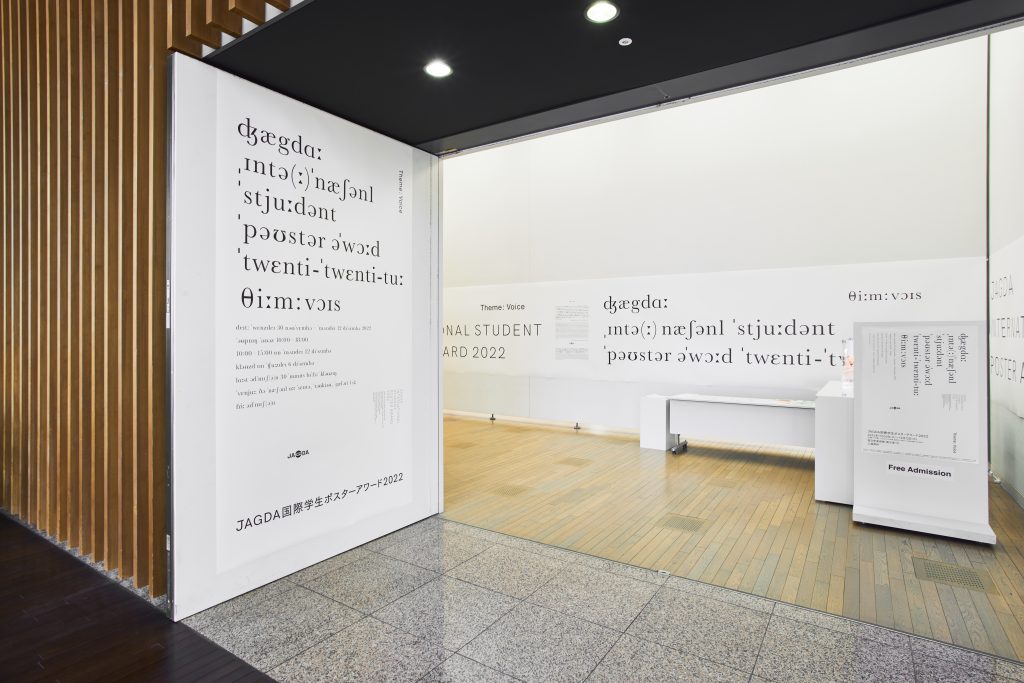
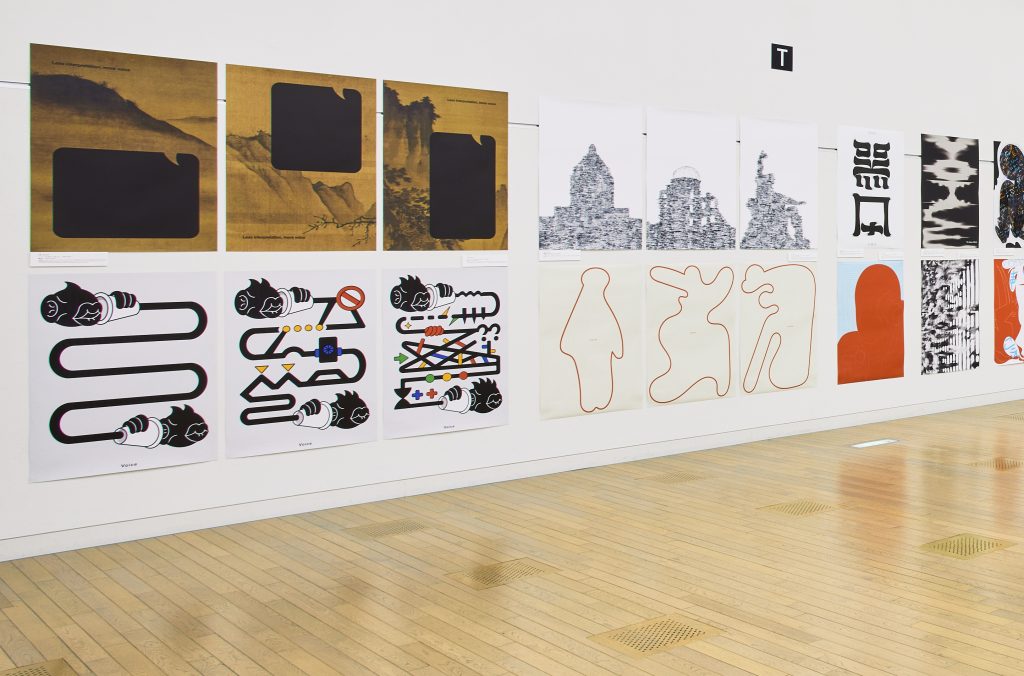
SOCIAL POSTER
